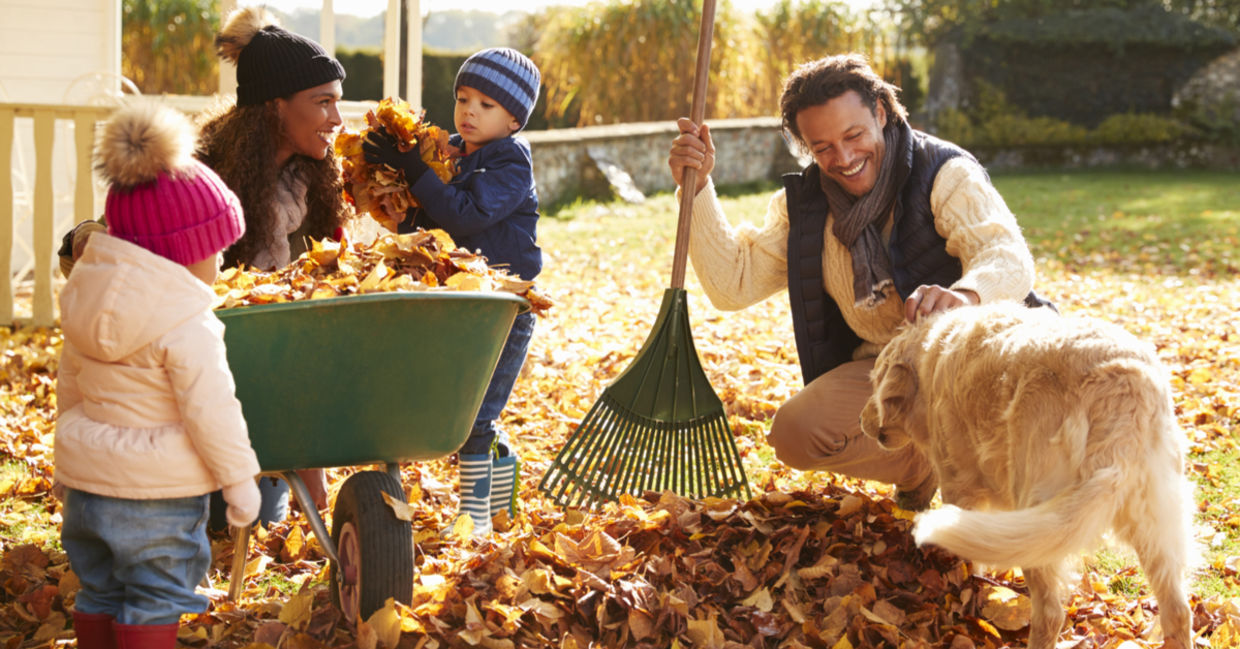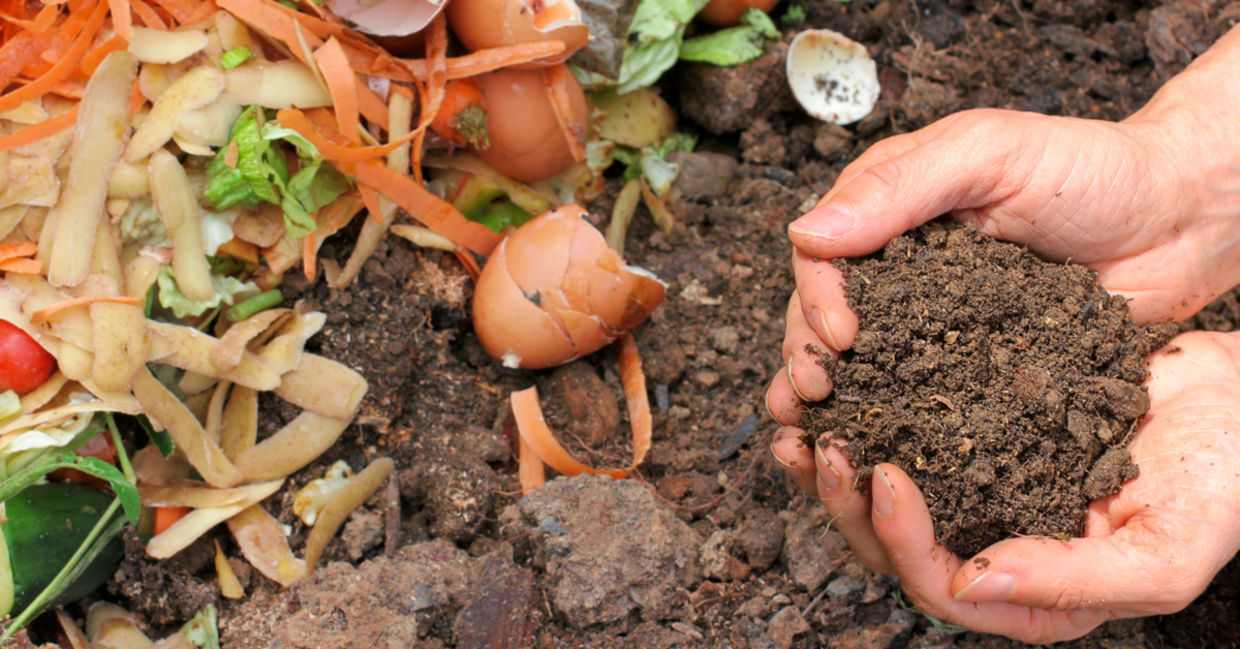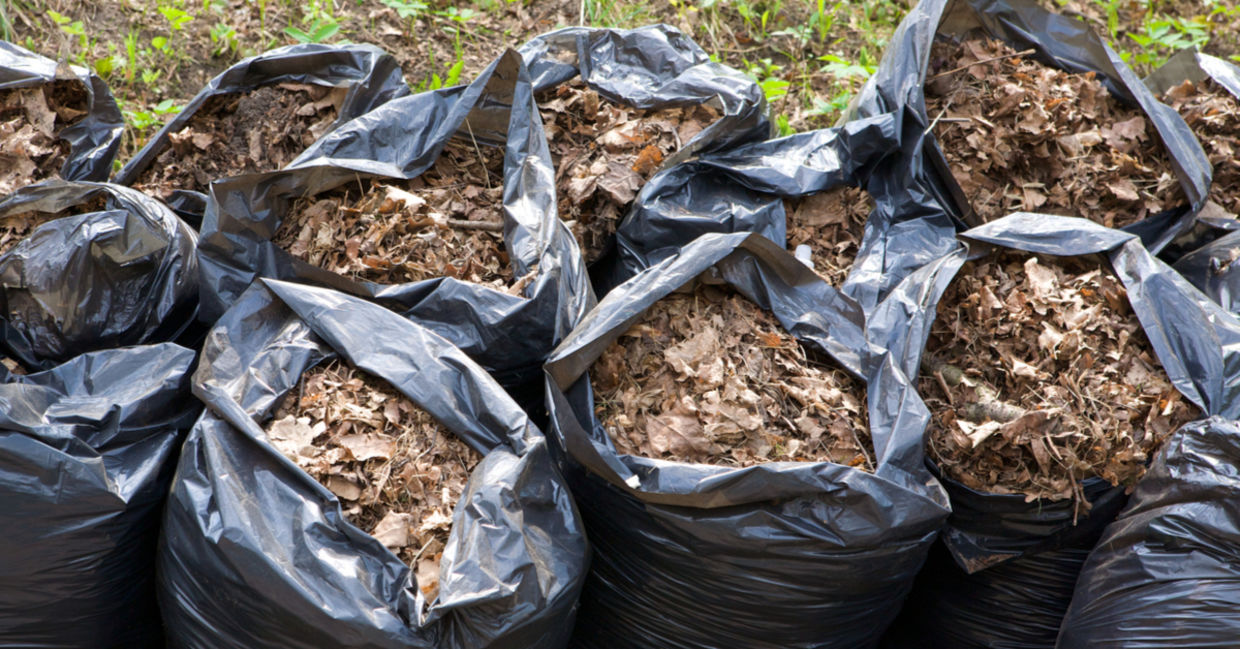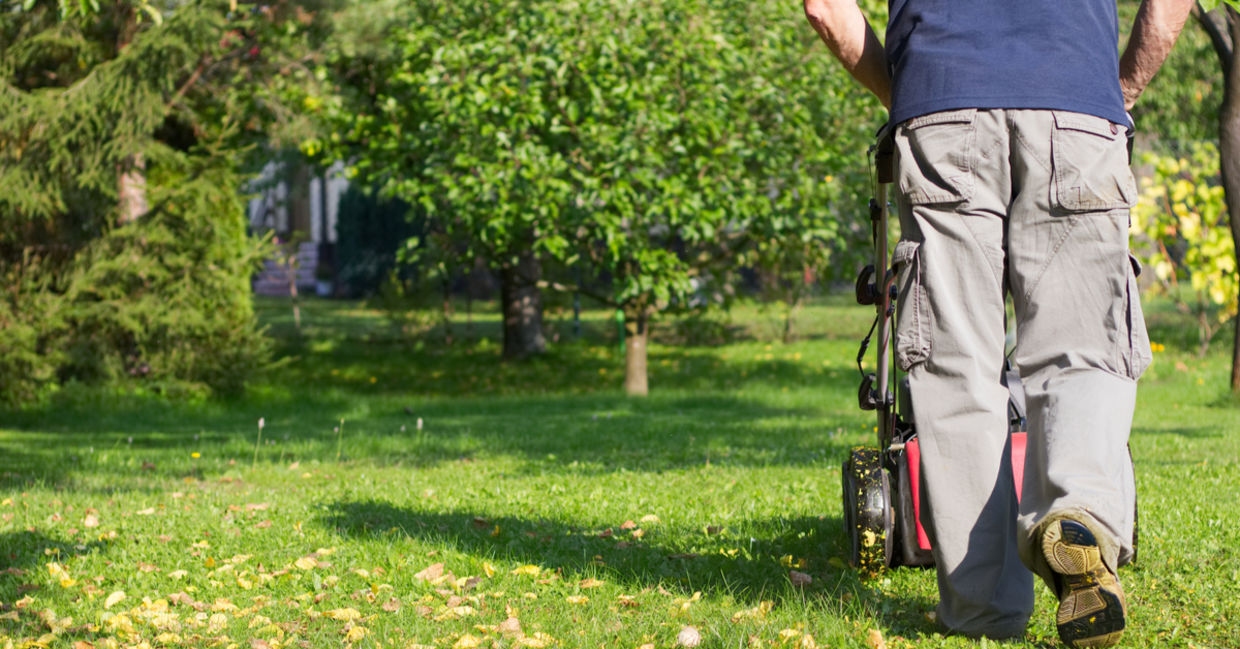
(Monkey Business Images / Shutterstock.com)
Come October, trees are in their glory, colored crimson, deep orange, and gold. The leaves soon drop, their shedding inspiring the word for the “fall” season. If leaves blanket your garden, there is great potential right on your property! Before you rake, bag, and place them at the curbside, upcycle your fallen leaves.
Leaves are filled with goodness, and when turned into healthy soil used to grow food, people benefit nutritionally. Leaves, according to Spectrum Analytic, are high in carbon along with many other nutrients and micronutrients including nitrogen, phosphorus, potassium, calcium, magnesium, sulfur, iron, manganese, zinc, and more.
One word of warning. Certain trees are allelopathic, which means their fallen leaves release chemicals that are unsafe for nearby plants, according to Permaculture News. One example is black walnut. For those living in warmer climates, eucalyptus and teak are allelopathic. Leaves from these trees should not be upcycled.
This autumn, keep your leaves at home, lock the carbon back in the ground, and enrich your soil. Here are five ways to transform those leaves into a gardener’s gold.
Turn them into compost
No point paying for compost when you can make it at home, especially since autumn leaves are compost’s best ingredient. The Spruce recommends first shredding the leaves with a lawnmower. Most lawnmowers have a mode for this or you can attach a mulching blade.Throw the shredded leaves in a composter and layer leaves with grass cuttings, food scraps, and coffee grounds.
If you have beech, oak, or pine trees in your garden, compost these separately. They are acidic, but once they are decomposed, their acidity becomes neutralized, says Permaculture News. Make sure it does not get too dry or soggy. With an occasional stir, you should have compost by spring.

(Marina Lohrbach / Shutterstock.com)
Turn them into leaf mold
Leaf mold is a type of soil conditioner, according to The Spruce. Unlike compost which enriches the soil, leaf mold increases its water retention and creates a superior habitat for soil life.
Shred your leaves and turn them into leaf mold for next years gardens. Leave any extra leaves on the soil to provide homes for overwintering insects & to reduce soil loss. pic.twitter.com/voIuwnnS5h
— Kristin Crouch (@deltagardener) October 25, 2018
Leaf mold consists of leaves and a bit of soil. The Spruce recommends piling the leaves into one area, adding a bit of soil and waiting until spring. In the spring, the leaves should have transformed into a crumbly dark brown pile with an earthy aroma. When it is ready, till it into your flower beds.
Make mulch
Mulch is spread on top of the soil like a protective blanket. Over the winter, it keeps snow off the soil and helps the earth retain moisture, explains The Spruce. In summer, mulch stops weeds from growing and cools the soil. Place it on flower beds, vegetable gardens, in containers, and around trees but not against tree trunks or plant stems.
You can get mulch at your local garden center for a pretty penny, but there are also a number of ways to make your own for much cheaper. Here's our DIY guide to mulching! #MillionGardens https://t.co/vUZpkBXnGb
— Modern Farmer (@ModFarm) July 28, 2020
Simply shred leaves and place them on top of the soil in a 2 to 3-inch layer. Mulch needs air and water to decompose and the more porous it is, the faster it will decompose. If you have lots of leaves, make a covered mulch bin filled with your extra shredded leaves for the spring.
Be a leaf hoarder
Think ahead and keep a few bags of leaves on hand. If you like to compost, come spring, it will be hard to find dried leaves for brown compost material. In the wet spring, suggests The Spruce, it will be helpful to add those dried leaves into the compost bin to make it less soggy.
Bags of leaves also make great insulation. Make sure they are dry when you bag them and make a few holes in the bags for aeration, then place them in cold areas of your home.

(PozitivStudija / Shutterstock.com)
Mow them
No raking, no bagging, no lifting. This is the easiest solution as it simply involves mowing the leaves where they fell on the lawn, says The Spruce. Right when the leaves start to fall, mow the lawn with a mulching lawnmower. Keep on mowing once a week until all of the leaves have fallen.
The shredded grass and leaves will be distributed across the garden. Over the winter months, these shredded pieces will break down, providing your soil with nutrients. The pieces will also offer shade, hampering weeds from growing in your lawn.

(encierro / Shutterstock.com)







